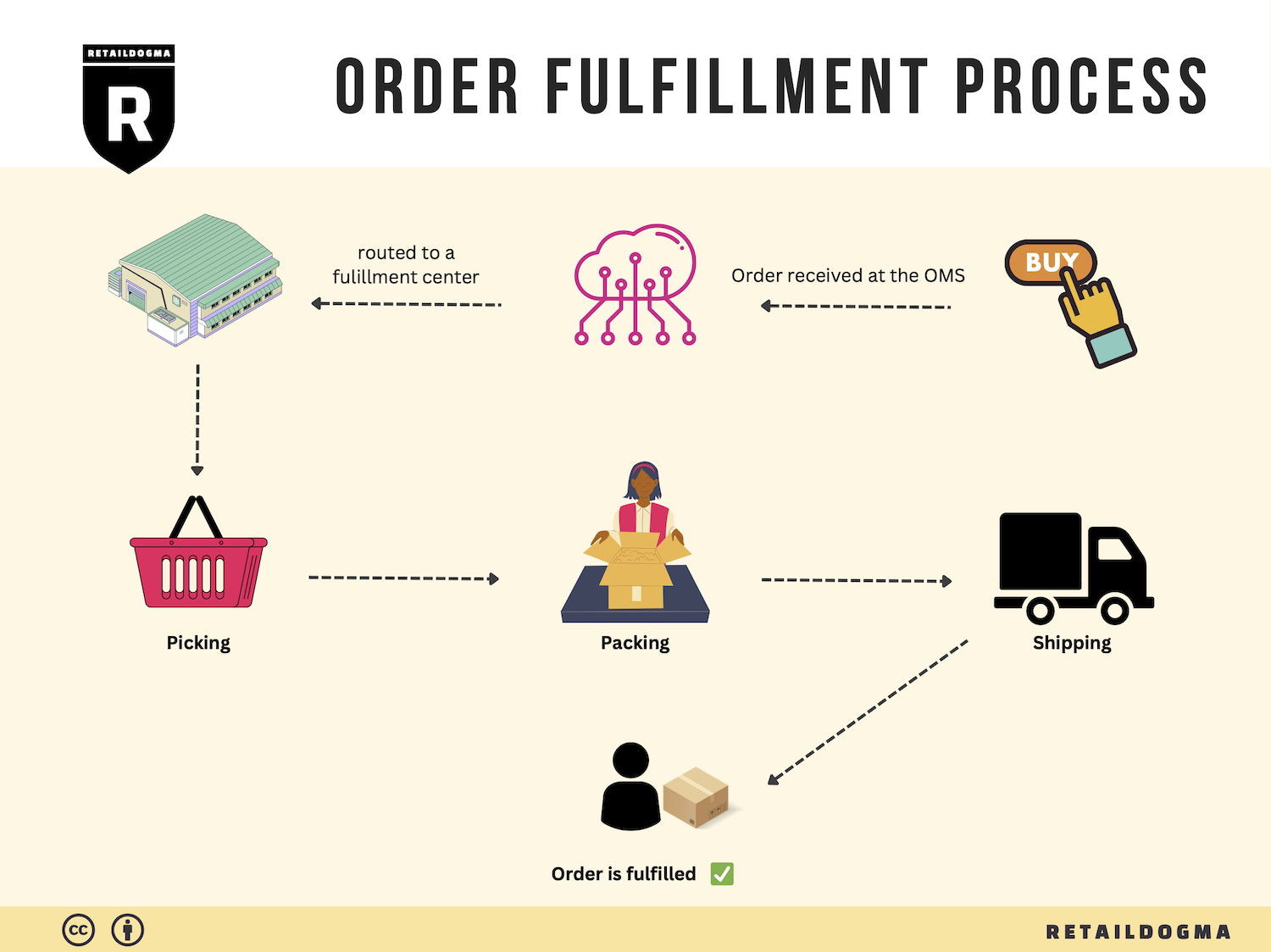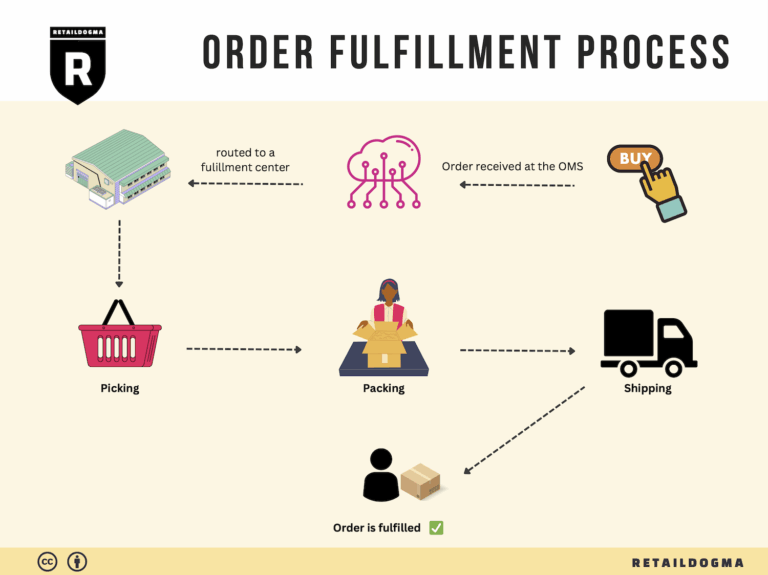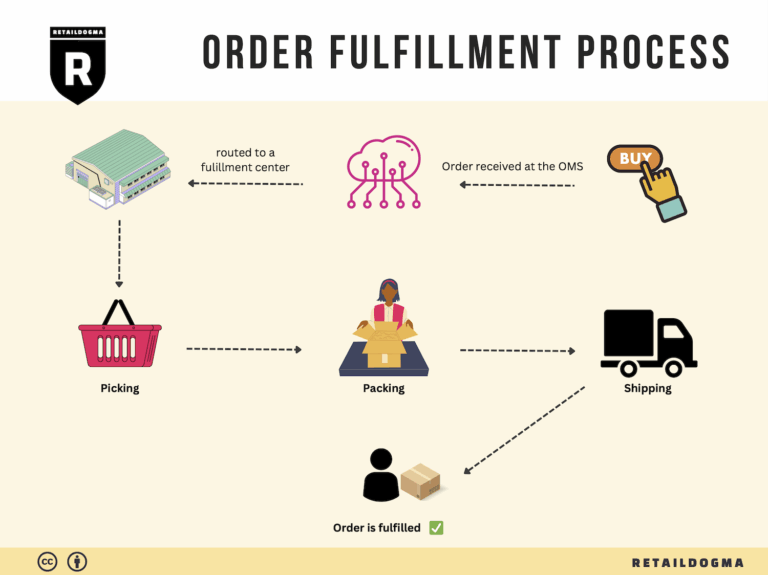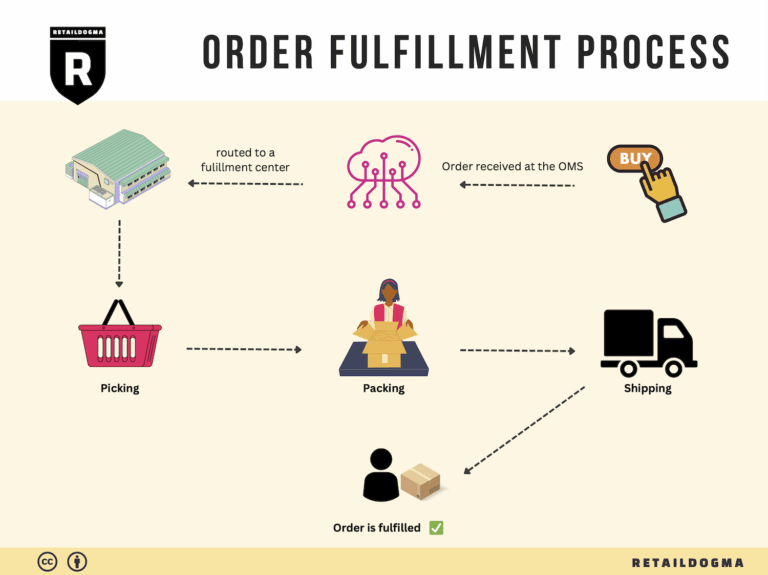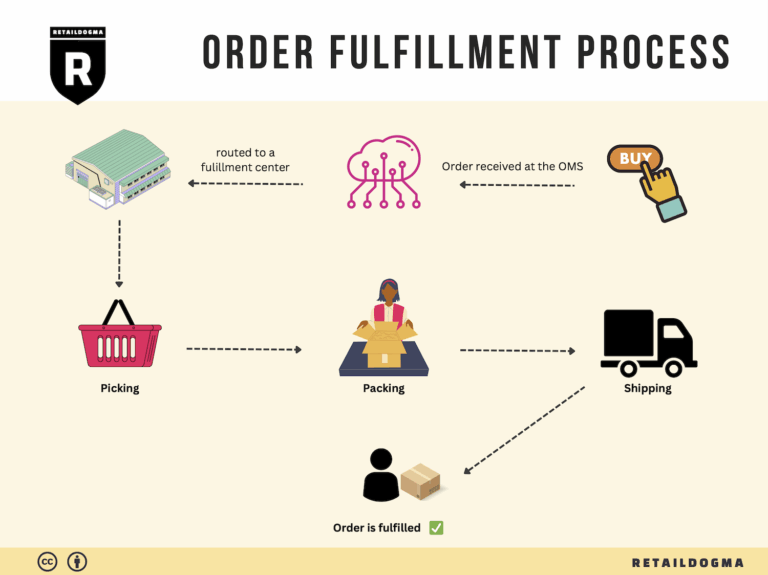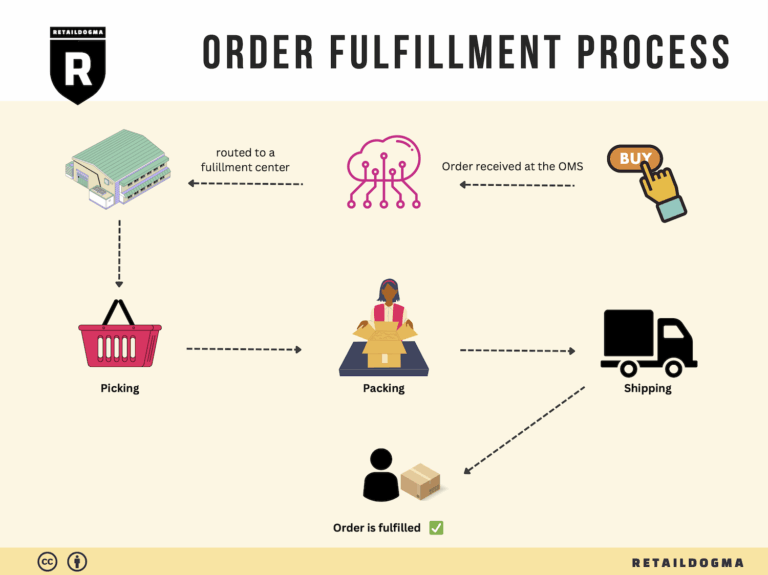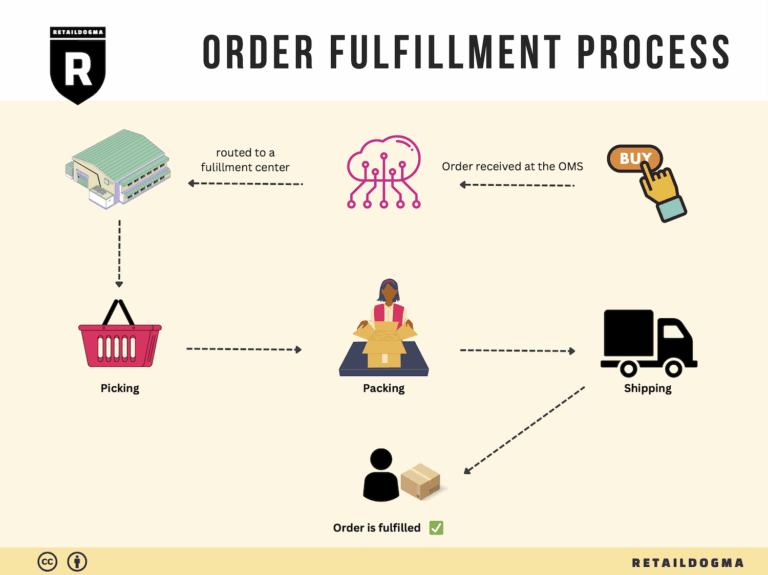What Is A Fulfillment Center? A Complete Guide (2025)
What is E-commerce Fulfillment? An Introduction for Growing Businesses
Understanding the Challenges of E-commerce Fulfillment
As an e-commerce business owner, you may find yourself grappling with a common pain point: the overwhelming task of packing and shipping orders. The excitement of growing your sales can quickly be overshadowed by the logistical challenges of fulfilling customer orders efficiently and accurately. This is where e-commerce fulfillment comes into play, serving as a critical component of your business operations.
At its core, fulfillment is the process of getting a product from your inventory to your customer’s doorstep. It encompasses everything from receiving and storing inventory, picking and packing orders, to shipping them out and managing returns. As your business scales, understanding and optimizing this process becomes vital to maintaining customer satisfaction and operational efficiency.
This guide aims to demystify e-commerce fulfillment and provide actionable insights for growing businesses. We will explore various fulfillment models, including Third-Party Logistics (3PL) and Fulfillment by Amazon (FBA), highlighting their unique advantages and how they can fit into your operational strategy. Each model offers different levels of service and control, which can greatly influence your logistics management.
Additionally, we will delve into the core services that fulfillment partners provide. Understanding these services—such as inventory management, order processing, and shipping—will help you identify what you need from a logistics partner. The guide will also provide practical tips on how to choose the right fulfillment partner, considering factors like location, technology, scalability, and customer service.
Pricing can often be a daunting aspect of fulfillment, especially for growing businesses. We will break down the typical costs associated with different fulfillment models, helping you to budget effectively and find a solution that aligns with your financial goals.
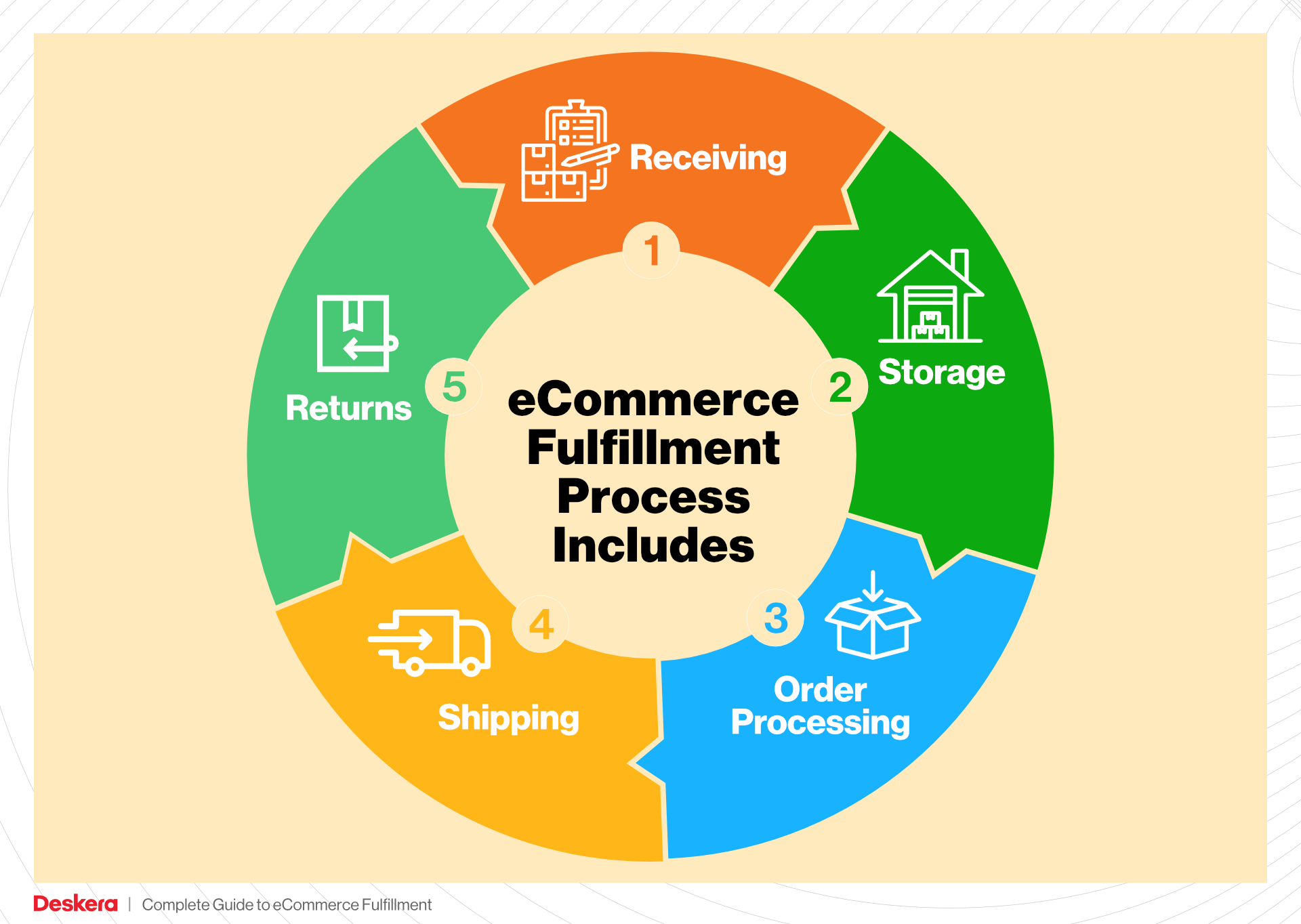
Ultimately, our goal is to empower you to make informed decisions about your logistics. By understanding the nuances of e-commerce fulfillment, you can streamline your operations, enhance customer satisfaction, and focus on what you do best—growing your business. Whether you are just starting out or looking to scale, this guide will provide you with the knowledge and tools necessary to navigate the complexities of fulfillment in the e-commerce landscape.
What You’ll Learn In This Guide
- What is E-commerce Fulfillment? An Introduction for Growing Businesses
- The Order Fulfillment Process: From ‘Buy’ Button to Customer’s Door
- Comparing Fulfillment Models: In-House vs. 3PL vs. Dropshipping
- A Deep Dive into Amazon FBA: Pros, Cons, and Who It’s For
- Core Services Offered by Fulfillment Centers
- How to Choose a Fulfillment Partner: A 6-Point Checklist
- Understanding Fulfillment Pricing: A Breakdown of Common Fees
- Frequently Asked Questions (FAQs) about Fulfillment
- Conclusion: Is Outsourcing Fulfillment the Right Move for Your Business?
- Important Disclaimer
The Order Fulfillment Process: From ‘Buy’ Button to Customer’s Door
1. Receiving Inventory
The first step in the order fulfillment process begins with receiving inventory. This involves the arrival of products at the fulfillment center, where they are unloaded, inspected, and entered into the inventory management system. Each product is assigned a Stock Keeping Unit (SKU), which is a unique identifier that helps track the product through the supply chain.
Importance: Proper inventory receiving is critical as it ensures that the right products are available for order fulfillment. Any discrepancies at this stage can lead to stockouts or overstock situations, both of which can harm customer satisfaction and increase operational costs. Accurate receiving also establishes a reliable foundation for inventory accuracy, which is essential for efficient order processing.
2. Warehouse Storage
Once inventory is received, it is organized and stored within the warehouse. The fulfillment center utilizes various storage methods, such as shelving, pallet racking, or bins, to maximize space and efficiency. Products are often organized based on their SKU and demand frequency, with high-demand items placed closer to the packing area for easier access.
Importance: Effective warehouse storage strategies significantly impact the speed and efficiency of the entire fulfillment process. By optimizing storage layouts and utilizing technology such as warehouse management systems (WMS), businesses can streamline retrieval processes, reduce picking errors, and enhance inventory turnover rates. A well-organized warehouse minimizes the time spent locating products, which is crucial for meeting customer expectations for fast delivery.
3. Order Picking
Order picking is the process of selecting items from the warehouse to fulfill a customer order. This step often involves generating pick lists that detail the SKUs and quantities needed for each order. Fulfillment centers may employ various picking methods, such as single order picking, batch picking, or zone picking, depending on their operational scale and order volume.
Importance: Efficient order picking directly affects the speed of order fulfillment and overall customer satisfaction. By utilizing advanced picking strategies and technologies, such as barcode scanning or automated picking systems, businesses can reduce picking time, minimize errors, and enhance productivity. Accurate picking ensures that customers receive the correct items, which is vital for maintaining trust and loyalty.
4. Order Packing
After items are picked, they are moved to the packing station, where the order is assembled and prepared for shipment. During this stage, products are carefully packed using appropriate materials to prevent damage during transit. Packing slips, which provide order details and shipping information, are also included in the package.
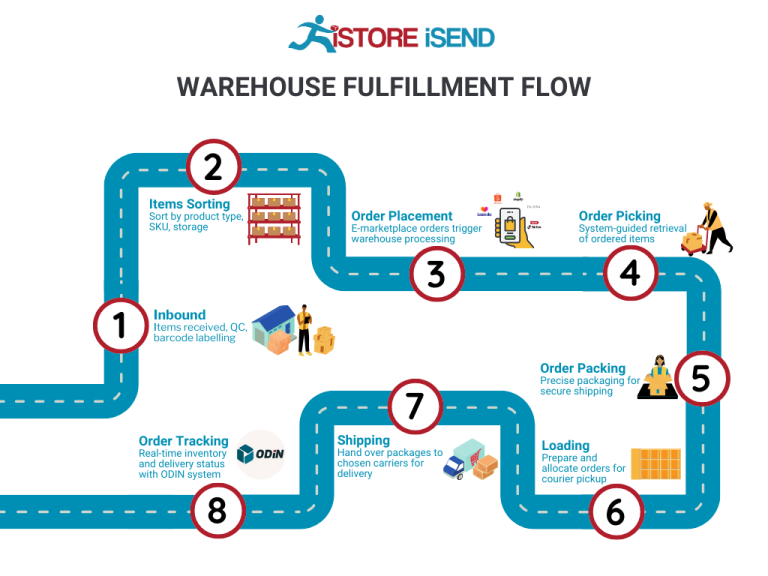
Importance: Proper order packing is essential for safeguarding products during delivery and ensuring a positive unboxing experience for customers. A well-packed order reduces the likelihood of returns due to damage and enhances customer satisfaction. Additionally, efficient packing processes can optimize shipping costs by minimizing package size and weight, further contributing to operational efficiency.
5. Shipping & Delivery
The final step in the order fulfillment process is shipping and delivery. Once packed, orders are labeled and sorted for shipment. Fulfillment centers collaborate with various carriers to choose the most efficient shipping methods based on cost, delivery speed, and destination. Tracking information is often provided to customers, allowing them to monitor their shipment status.
Importance: Timely shipping and delivery are crucial for customer satisfaction and repeat business. A well-coordinated shipping process ensures that orders reach customers promptly and in good condition. By leveraging partnerships with reliable carriers and utilizing shipping software, businesses can enhance their logistics capabilities, optimize shipping costs, and improve overall fulfillment performance.
In summary, understanding and optimizing each step of the order fulfillment process—receiving inventory, warehouse storage, order picking, order packing, and shipping & delivery—are vital for e-commerce businesses aiming to scale effectively. By focusing on these elements, companies can enhance operational efficiency, reduce costs, and ultimately drive customer satisfaction.
Comparing Fulfillment Models: In-House vs. 3PL vs. Dropshipping
Fulfillment Model Comparison
| Model | Who Handles Inventory | Best For (Business Stage) | Key Advantage | Key Disadvantage |
|---|---|---|---|---|
| In-House Fulfillment | Business (Self-managed) | Established businesses | Complete control over inventory and processes | High overhead costs and resource demands |
| Third-Party Logistics (3PL) | Third-party provider | Growing businesses | Scalability and access to expertise | Less control over inventory and fulfillment speed |
| Dropshipping | Supplier/Manufacturer | Startups and small businesses | Low upfront costs and no inventory management | Lower profit margins and potential quality issues |
In-House Fulfillment
In-house fulfillment refers to a logistics model where a business manages its own inventory, warehousing, and shipping processes. This approach is typically adopted by established businesses that have the resources and volume of orders to justify the investment in storage and logistics infrastructure. The key advantage of in-house fulfillment is the complete control it offers over inventory and operational processes. Businesses can customize their fulfillment procedures to align with their brand, ensuring a consistent customer experience. Additionally, they can respond quickly to changes in demand or inventory levels without relying on external partners.
However, the disadvantages of in-house fulfillment are significant. It requires substantial overhead costs, including warehousing space, staffing, and technology investments. As the volume of orders increases, so too do the complexities of managing logistics, which can stretch resources thin. Furthermore, if the business experiences fluctuations in demand, excess inventory can lead to increased storage costs and potential waste.
Third-Party Logistics (3PL)
Third-party logistics (3PL) providers offer outsourced logistics services that encompass a wide range of functions, including inventory management, warehousing, and shipping. This model is particularly beneficial for growing businesses that may not have the capacity or expertise to manage logistics efficiently in-house. By partnering with a 3PL, businesses can leverage the provider’s expertise and technology, enabling them to scale operations more effectively. The key advantage here is scalability; as order volume increases, a 3PL can easily adapt to changing needs without the business having to invest heavily in infrastructure.
On the downside, using a 3PL means ceding some control over inventory and fulfillment processes. Businesses must rely on their 3PL partner to maintain quality and speed, which can lead to inconsistencies if the provider does not meet expectations. Additionally, fees associated with 3PL services can add up, especially if the business experiences fluctuating demand or if the services required become more complex.
Dropshipping
Dropshipping is a fulfillment model where the retailer does not keep products in stock. Instead, when a customer places an order, the retailer purchases the item from a third-party supplier who ships it directly to the customer. This model is ideal for startups and small businesses looking to minimize upfront costs and avoid the complexities of inventory management. The primary advantage of dropshipping is that it requires little capital investment; businesses do not need to buy inventory upfront, which significantly lowers the financial risk.
However, dropshipping comes with its own set of challenges. One major drawback is the lower profit margins; since retailers purchase products from suppliers at wholesale prices, their ability to mark up prices is often limited. Moreover, quality control can be an issue, as businesses have little oversight over the products being shipped to customers. This can lead to inconsistencies in product quality and shipping times, which can negatively impact customer satisfaction. Additionally, relying on suppliers for fulfillment means that businesses are vulnerable to stock shortages and shipping delays, which can further complicate the customer experience.
Conclusion
Choosing the right fulfillment model is a critical decision for e-commerce businesses, particularly as they scale. In-house fulfillment offers control and customization but comes with high overhead costs. Third-party logistics provide scalability and expertise but may reduce control and increase dependency on external partners. Dropshipping minimizes financial risk and simplifies inventory management but can lead to lower profit margins and quality concerns. Ultimately, the best model will depend on the specific needs, resources, and growth trajectory of the business.
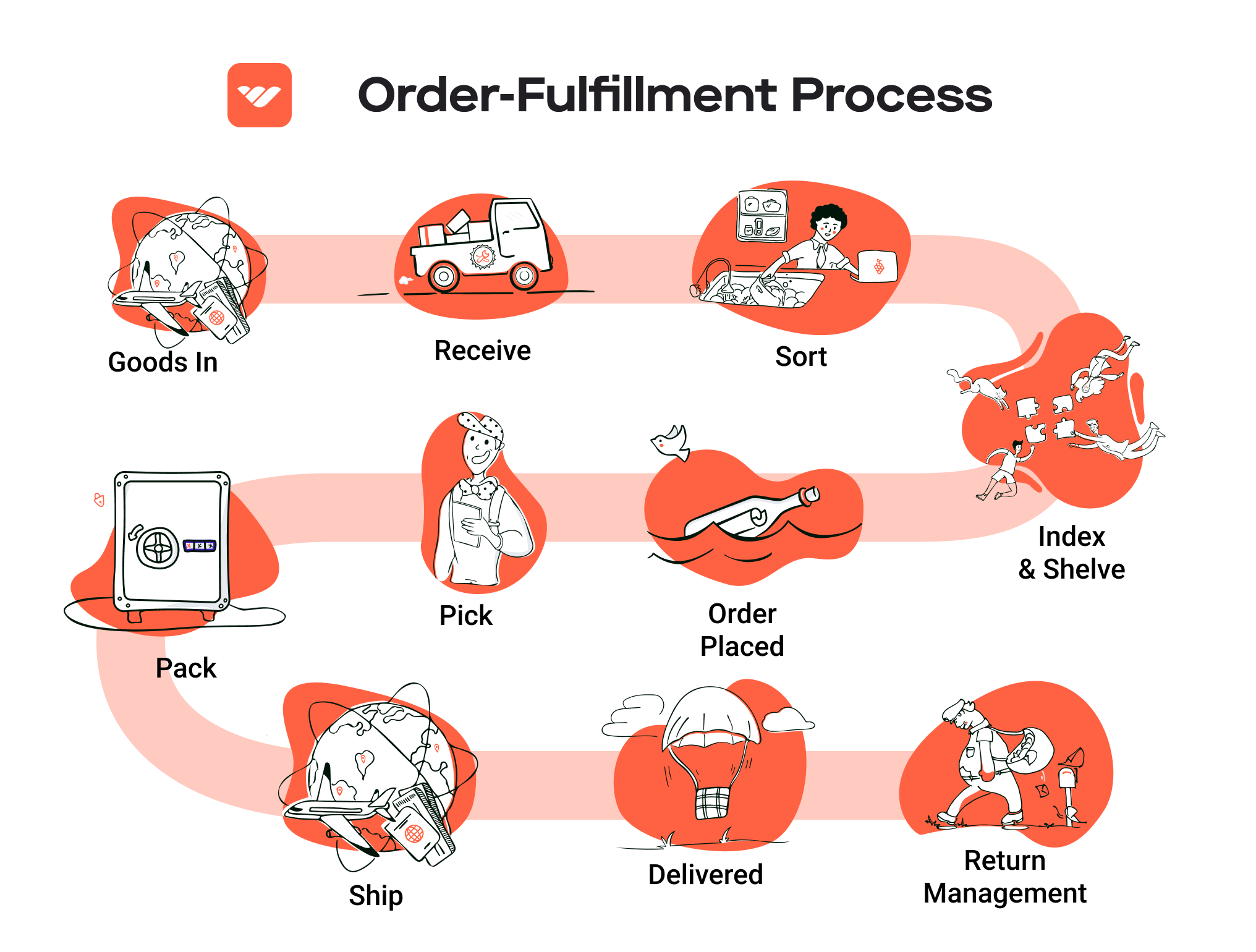
A Deep Dive into Amazon FBA: Pros, Cons, and Who It’s For
Understanding Fulfillment by Amazon (FBA)
Fulfillment by Amazon (FBA) is a service offered by Amazon that allows sellers to store their products in Amazon’s fulfillment centers. Amazon takes care of storage, packaging, and shipping, as well as customer service and returns for these products. This service can significantly streamline operations for e-commerce businesses, enabling sellers to leverage Amazon’s vast logistics network to reach customers more efficiently.
When a customer orders a product through Amazon, the order is processed at the nearest fulfillment center, where the item is picked, packed, and shipped directly to the customer. This allows sellers to focus on other aspects of their business, such as product sourcing and marketing, while Amazon handles the logistics.
How FBA Works
-
Setup: Sellers sign up for an Amazon seller account and select the FBA option. They can then list their products as FBA items.
-
Shipping Inventory: Sellers send their inventory to Amazon’s fulfillment centers. Amazon provides guidelines on packaging and labeling to ensure smooth processing.
-
Storage: Once the inventory arrives at the fulfillment center, it is stored until it is sold. Amazon manages inventory levels and provides data analytics to help sellers monitor stock.
-
Order Fulfillment: When a customer places an order, Amazon takes care of picking, packing, and shipping the product. The seller benefits from Amazon’s extensive logistics network, ensuring fast delivery.
-
Customer Service and Returns: Amazon also handles customer inquiries and returns for FBA products, providing a seamless experience for both sellers and buyers.
Pros of Using FBA
1. Prime Eligibility
One of the most significant advantages of using FBA is that products become eligible for Amazon Prime. Prime members enjoy expedited shipping, which can lead to higher sales volumes. Being part of the Prime program can significantly increase product visibility and appeal to a large customer base.
2. Customer Trust
Amazon is a recognized and trusted brand. When products are fulfilled by Amazon, it gives customers confidence in the purchasing process, knowing that they will receive their orders on time and that they can rely on Amazon’s customer service for any issues.
3. Multi-Channel Fulfillment
FBA can be used not only for sales on Amazon but also for other sales channels. Sellers can use FBA to fulfill orders from their own websites or other platforms, allowing them to centralize their inventory management while still reaching a broad audience.
4. Simplified Logistics
By outsourcing fulfillment to Amazon, sellers can reduce the complexity of their logistics operations. This is especially beneficial for small to medium-sized businesses that may lack the resources to manage fulfillment in-house.
5. Scalability
As sales grow, FBA allows businesses to scale operations without the need for significant investment in warehousing and logistics infrastructure. Sellers can quickly adapt to increased demand by sending more inventory to Amazon.
Cons of Using FBA
1. High Fees
While FBA can save time and increase sales, it comes at a cost. Amazon charges various fees, including storage fees for holding inventory and fulfillment fees for picking and packing orders. These costs can add up, significantly impacting profit margins.
2. Strict Inventory Rules
Sellers must adhere to Amazon’s strict inventory management rules. This includes guidelines on labeling, packaging, and shipping. Failure to comply can result in additional fees or penalties.
3. Commingling Risks
FBA uses a system of commingling inventory, meaning that products from different sellers may be stored together. This can pose risks, such as receiving returns or complaints about items that were not sold by a specific seller. This issue can lead to brand reputation concerns and customer dissatisfaction.
4. Limited Control Over Fulfillment
Once inventory is sent to Amazon, sellers have limited control over how their products are stored and shipped. This can lead to potential issues, such as damaged items or errors in order fulfillment.
5. Long-Term Storage Fees
If inventory remains unsold for an extended period, sellers may incur long-term storage fees. This can incentivize sellers to frequently manage their inventory and remove items that are not selling well, which may require additional effort.
Who is FBA Best For?
FBA is particularly beneficial for:
-
Small to Medium-Sized Businesses: Companies that lack the resources to manage their own fulfillment operations can greatly benefit from outsourcing to Amazon. FBA provides a way to access a larger market without the overhead costs associated with logistics.
-
E-commerce Entrepreneurs: New sellers looking to establish a presence on Amazon can leverage FBA to simplify operations and enhance customer trust.
-
Brands with High Sales Volume: Businesses that experience high sales volume can take advantage of FBA’s efficiency, allowing them to focus on scaling their operations rather than logistics.
-
Sellers of Non-Seasonal Products: Businesses that sell products with consistent demand can benefit from FBA’s inventory management and fulfillment capabilities.
-
Multi-Channel Retailers: Sellers who also sell on their own websites or other marketplaces can use FBA to streamline their fulfillment process across different channels.
In conclusion, while FBA presents numerous advantages, such as increased visibility and simplified logistics, it also comes with challenges, including high fees and strict compliance requirements. E-commerce business owners must carefully assess their operations and goals to determine if FBA is the right choice for scaling their business.
Core Services Offered by Fulfillment Centers
Inventory Management & Warehousing
Inventory management and warehousing are foundational services provided by fulfillment centers. This process involves the systematic tracking of inventory levels, orders, sales, and deliveries. Fulfillment centers like the Amazon Fulfillment Center-Ind1 implement sophisticated inventory management systems that utilize real-time data analytics to monitor stock levels and automate reordering processes.
Benefits:
For e-commerce businesses, effective inventory management minimizes the risk of stockouts and overstock situations, which can lead to lost sales and increased holding costs, respectively. By leveraging advanced warehousing solutions, businesses can ensure that their products are stored efficiently and are easily accessible for order fulfillment. This not only speeds up the delivery process but also enhances customer satisfaction through timely deliveries. Moreover, accurate inventory tracking allows businesses to make informed decisions about purchasing and product offerings, ultimately driving profitability.
Pick and Pack Services
Pick and pack services are critical to the fulfillment process, wherein items are selected from the warehouse (picked) and packaged for shipment (packed). Fulfillment centers utilize optimized picking routes and advanced technology, such as barcode scanning and automated systems, to streamline this process.
Benefits:
For e-commerce operators, efficient pick and pack services reduce the time taken to fulfill orders, which is crucial in meeting customer expectations for fast delivery. By outsourcing these services to a fulfillment center, businesses can focus on core activities such as marketing and product development, rather than logistics. Additionally, fulfillment centers often offer flexible packing options, which can be tailored to specific product requirements, thereby enhancing the overall presentation and protection of the items during transit. This attention to detail can improve the unboxing experience for customers, further fostering brand loyalty.
Kitting and Assembly
Kitting and assembly services involve the grouping of individual items into ready-to-ship sets or the assembly of multi-component products before they are shipped to customers. This service is particularly beneficial for businesses that sell complex products or bundles, such as subscription boxes or promotional kits.
Benefits:
For e-commerce businesses, kitting and assembly can significantly reduce the time and labor costs associated with preparing products for sale. By streamlining the process of creating product bundles or assembled items, businesses can offer unique products that stand out in the market, increasing their competitive edge. This service also allows businesses to manage inventory more effectively by consolidating items that are frequently sold together, thus optimizing storage space. Additionally, it simplifies the fulfillment process, as the fulfillment center can handle the complex logistics of assembling and packaging, enabling e-commerce owners to scale their operations without a corresponding increase in overhead.
Returns Management (Reverse Logistics)
Returns management, or reverse logistics, is the process of handling returned items. Fulfillment centers manage this complex process by inspecting returned products, restocking items when possible, and processing refunds or exchanges efficiently. A well-structured returns management system can significantly enhance customer experience and loyalty.
Benefits:
For e-commerce businesses, effective returns management is critical in maintaining customer satisfaction. A streamlined return process can reduce the friction associated with returns, making customers more likely to shop again. Fulfillment centers can offer analytics on return patterns, providing valuable insights into product performance and customer preferences. This information can help businesses refine their product offerings and marketing strategies. Additionally, by outsourcing returns management, businesses can save on labor and operational costs, allowing them to focus resources on growth initiatives rather than on handling logistics.
In summary, partnering with a fulfillment center such as Amazon Fulfillment Center-Ind1 offers a multitude of services that are essential for scaling e-commerce operations. By leveraging these core services, businesses can enhance efficiency, improve customer satisfaction, and ultimately drive sales growth.
How to Choose a Fulfillment Partner: A 6-Point Checklist
Location & Warehouse Network
Importance: The geographical location of a fulfillment partner’s warehouses directly affects shipping times and costs. A partner with strategically located facilities can help you reach customers faster and reduce transportation expenses.
Questions to Ask:
– Where are your warehouses located, and how does that align with our target market?
– Can you provide information on your shipping zones and delivery times to key regions?
– Do you have plans for expanding your warehouse network in the future?
Technology & Integrations
Importance: In today’s e-commerce landscape, leveraging technology is critical for streamlining operations. A fulfillment partner should offer robust systems that integrate seamlessly with your e-commerce platform, inventory management, and order processing tools.
Questions to Ask:
– What technology do you use for order management and inventory tracking?
– Can your system integrate with our existing e-commerce platform (e.g., Shopify, Magento, Amazon)?
– Do you offer real-time tracking for shipments, and how can we access this information?
Specializations (e.g., Cold Storage, Oversized Items)
Importance: Depending on your product offerings, you may need a partner with specialized capabilities. For instance, if you sell perishable goods, cold storage facilities are essential. If your products are large or heavy, ensure the partner can handle oversized items efficiently.
Questions to Ask:
– What types of products do you specialize in fulfilling?
– Do you have the necessary facilities and equipment for handling our specific product requirements?
– Can you provide case studies or references for similar products you’ve handled?
Scalability & Capacity
Importance: As your business grows, your fulfillment needs will likely change. A good partner should not only meet your current demands but also scale with you as your order volume increases.
Questions to Ask:
– What is your current capacity for handling orders, and how do you manage seasonal fluctuations?
– Can you accommodate rapid growth, and what is the process for scaling operations?
– Are there any limitations on the volume of orders or products you can handle?
Pricing and Contracts
Importance: Understanding the pricing structure and contract terms is crucial to ensuring that your fulfillment costs align with your budget. Transparent pricing can help you avoid unexpected fees and improve your profit margins.
Questions to Ask:
– Can you provide a detailed breakdown of your pricing model (e.g., storage fees, picking and packing fees, shipping costs)?
– Are there any additional costs that we should be aware of?
– What are the terms of the contract, and is there flexibility for renegotiation as our needs change?
Customer Support & Reviews
Importance: Reliable customer support is vital for resolving issues quickly and maintaining a smooth operation. Furthermore, researching customer reviews can provide insights into a partner’s reliability and service quality.
Questions to Ask:
– What customer support channels do you offer (e.g., phone, email, chat), and what are your response times?
– Can you share testimonials or case studies from other clients?
– How do you handle customer complaints or issues, and what is your escalation process?
By following this checklist, e-commerce businesses can make informed decisions when choosing a fulfillment partner. Each point emphasizes critical aspects of fulfillment operations, ensuring that partners align with your business goals and customer expectations. As you scale your operations, the right fulfillment partner can be a significant asset in achieving success in the competitive e-commerce landscape.
Understanding Fulfillment Pricing: A Breakdown of Common Fees
Initial Setup Fees
Initial setup fees are typically charged when you first start using a fulfillment service. This fee can cover a variety of costs, including account setup, software integration, and onboarding processes. Depending on the fulfillment center, this fee can vary significantly.
For example, some providers may charge a flat fee, while others may base it on the complexity of your inventory or the level of service you require. It’s essential to clarify what is included in the setup fee. Some companies may offer promotional discounts that reduce this initial cost, so be sure to inquire about any potential savings.
Receiving Fees
Receiving fees are charged when your products arrive at the fulfillment center. This fee is generally based on the volume or weight of the goods being received. Fulfillment centers often charge per pallet or per unit, and fees can vary depending on whether the products are bulk shipments or individual items.
To calculate the receiving fee, fulfillment centers typically take into account the time and labor required to unload, inspect, and store your products. If your shipment is not prepared according to the fulfillment center’s requirements, additional fees may apply for extra handling.
Storage Fees (per pallet/bin)
Storage fees are charged for the space your inventory occupies in the fulfillment center. This fee can be calculated on a monthly basis, often assessed per pallet or per bin. The cost may vary based on the size of the items stored and the duration of storage.
Many fulfillment centers implement tiered pricing, meaning that costs can decrease as you store larger volumes. It’s crucial to understand the storage policies, especially if you anticipate seasonal fluctuations in inventory levels. Over time, excessive storage can lead to long-term storage fees, which are often considerably higher than standard storage costs.
Pick & Pack Fees (per item/order)
Pick and pack fees are incurred each time an order is processed. These fees cover the labor and materials needed to pick items from the warehouse, package them appropriately, and prepare them for shipment. Fees can vary based on the number of items in an order, with many fulfillment centers charging a base fee plus an additional fee for each item picked.
For instance, a fulfillment center might charge a flat fee for the first item in an order and a reduced fee for each additional item. Understanding this pricing model is crucial for accurate cost forecasting, especially if your business offers a wide range of products or customized orders.
Shipping Fees
Shipping fees are one of the most variable costs in fulfillment pricing, as they depend on the destination, shipping method, package weight, and dimensions. Fulfillment centers usually have contracts with major carriers and can offer competitive rates, but these fees can still add up quickly.
Shipping fees can be calculated using a variety of methods, including flat-rate shipping or variable rates based on weight and distance. Some fulfillment centers may also charge a handling fee in addition to the shipping cost. It’s important to ask about any potential surcharges, such as residential delivery fees or fuel surcharges, which can affect your total shipping costs.
Tips for Getting an Accurate Quote
-
Provide Detailed Information: When seeking quotes from fulfillment centers, be as detailed as possible about your product types, order volume, and specific needs. This allows providers to give you the most accurate estimate.
-
Understand Pricing Structures: Ask for a breakdown of all potential fees, including any additional costs that may arise. Understanding the full pricing structure can help you avoid surprises down the line.
-
Negotiate Terms: Don’t hesitate to negotiate fees, especially if you expect high volumes. Many fulfillment centers are open to adjusting prices based on your projected business.
-
Ask About Discounts: Inquire about discounts for long-term contracts or bulk storage options, as many fulfillment centers offer incentives for loyalty or larger volumes.
-
Evaluate Total Costs: Look beyond the initial quote and consider the total cost of fulfillment, including all fees and potential variable costs. This comprehensive view will help you choose the best fulfillment partner for your business.
By understanding these common fulfillment pricing models, you can make informed decisions that align with your business objectives and budget, ultimately leading to a more efficient and cost-effective fulfillment process.
Frequently Asked Questions (FAQs) about Fulfillment
1. What is the Amazon Fulfillment Center-Ind1?
The Amazon Fulfillment Center-Ind1, located in Whitestown, IN, is a large-scale warehouse facility that specializes in storing and shipping a diverse range of products for Amazon. It plays a crucial role in Amazon’s logistics network, ensuring efficient order processing and timely delivery to customers.
2. How does Amazon Fulfillment Center-Ind1 streamline the fulfillment process?
The center utilizes advanced technology and operational efficiencies to manage inventory, process orders, and optimize shipping routes. By leveraging automation and real-time data, the facility enhances order accuracy and speeds up delivery times, which are essential for meeting customer expectations in the e-commerce landscape.
3. What’s the difference between a warehouse and a fulfillment center?
While both warehouses and fulfillment centers store products, their functions differ significantly. A warehouse primarily focuses on inventory storage and may not engage in order processing. In contrast, a fulfillment center is designed to handle the entire order fulfillment process, including picking, packing, shipping, and returns management, often with a focus on speed and efficiency.
4. What is a 3PL (Third-Party Logistics)?
A 3PL is a service provider that manages logistics and supply chain functions for businesses. This can include warehousing, order fulfillment, transportation, and distribution. Many e-commerce businesses partner with 3PLs to leverage their expertise and infrastructure, allowing them to scale operations without investing heavily in logistics capabilities.
5. How much do fulfillment services cost?
The cost of fulfillment services can vary widely based on factors such as the size and weight of products, order volume, storage needs, and shipping destinations. Typically, fulfillment costs include storage fees, picking and packing fees, shipping charges, and any additional services like returns processing. It’s essential for businesses to evaluate their specific needs and compare quotes from different providers to find the best fit.
6. What types of products can be stored at Amazon Fulfillment Center-Ind1?
The Amazon Fulfillment Center-Ind1 can accommodate a wide range of products, from small electronics to household goods and apparel. However, certain items, such as hazardous materials or perishable goods, may have specific storage restrictions. Businesses should consult Amazon’s guidelines to ensure compliance.
7. How does Amazon ensure fast shipping from Fulfillment Center-Ind1?
Amazon employs a combination of advanced logistics technology, a strategically located fulfillment network, and optimized shipping processes to ensure fast delivery. By using data analytics to predict demand and streamline inventory management, the center can fulfill orders quickly, often within one or two days.
8. Can businesses use Amazon Fulfillment Center-Ind1 for international shipping?
Yes, businesses can leverage Amazon’s global logistics capabilities to ship internationally from the Fulfillment Center-Ind1. This allows sellers to reach a broader customer base while benefiting from Amazon’s established shipping networks and expertise in cross-border logistics.
9. What are the benefits of using Amazon Fulfillment Center-Ind1 for e-commerce businesses?
Utilizing Amazon Fulfillment Center-Ind1 offers several advantages, including access to Amazon’s vast distribution network, improved order accuracy, faster shipping times, and enhanced customer satisfaction. Additionally, businesses can focus on growth and product development while relying on Amazon for logistics and fulfillment.
10. How can I get started with Amazon Fulfillment Center-Ind1?
To begin using Amazon Fulfillment Center-Ind1, businesses should sign up for Amazon’s Fulfillment by Amazon (FBA) program. This involves creating an Amazon seller account, listing products, and shipping inventory to the fulfillment center. Detailed guidelines and resources are available on the Amazon Seller Central website to assist new sellers in the onboarding process.
Conclusion: Is Outsourcing Fulfillment the Right Move for Your Business?
Evaluating the Benefits of Outsourcing Fulfillment
Outsourcing fulfillment can be a game-changer for e-commerce businesses aiming to scale operations efficiently. One of the most significant advantages is time savings. By partnering with a fulfillment service, you delegate the complexities of inventory management, order processing, and shipping logistics. This allows you to focus on core business activities like product development, marketing, and customer engagement, ultimately driving growth and innovation.
Scalability is another critical benefit. As your sales volume increases, a reliable fulfillment partner can easily adapt to your changing needs. Whether you’re experiencing seasonal spikes or launching new products, a proficient fulfillment service can handle fluctuations without requiring significant investments in infrastructure or personnel. This flexibility enables you to respond swiftly to market demands, positioning your business for success.
Moreover, leveraging the expertise of fulfillment professionals can lead to improved operational efficiency. These partners often possess advanced technologies and logistics strategies that enhance order accuracy and speed. Their experience in managing supply chains can also minimize errors and reduce shipping costs, directly impacting your bottom line.
However, the choice of a fulfillment partner is paramount. Not all services are created equal; selecting the right one aligns with your business model and growth objectives is crucial. A thorough evaluation of potential partners’ capabilities, technologies, and customer service practices will set the foundation for a successful collaboration.
Call to Action
As you contemplate the future of your e-commerce business, take a moment to audit your current shipping and fulfillment processes. Are they equipped to support your growth ambitions? Consider whether partnering with a fulfillment service could enhance your operational efficiency and customer satisfaction. Embrace the opportunity to streamline your logistics and position your business for sustainable growth.
Important Disclaimer
⚠️ Important Disclaimer
The information in this guide is for educational purposes. Fulfillment services, pricing, and platform features change frequently. Always conduct your own due diligence and consult with providers directly before making business decisions.
